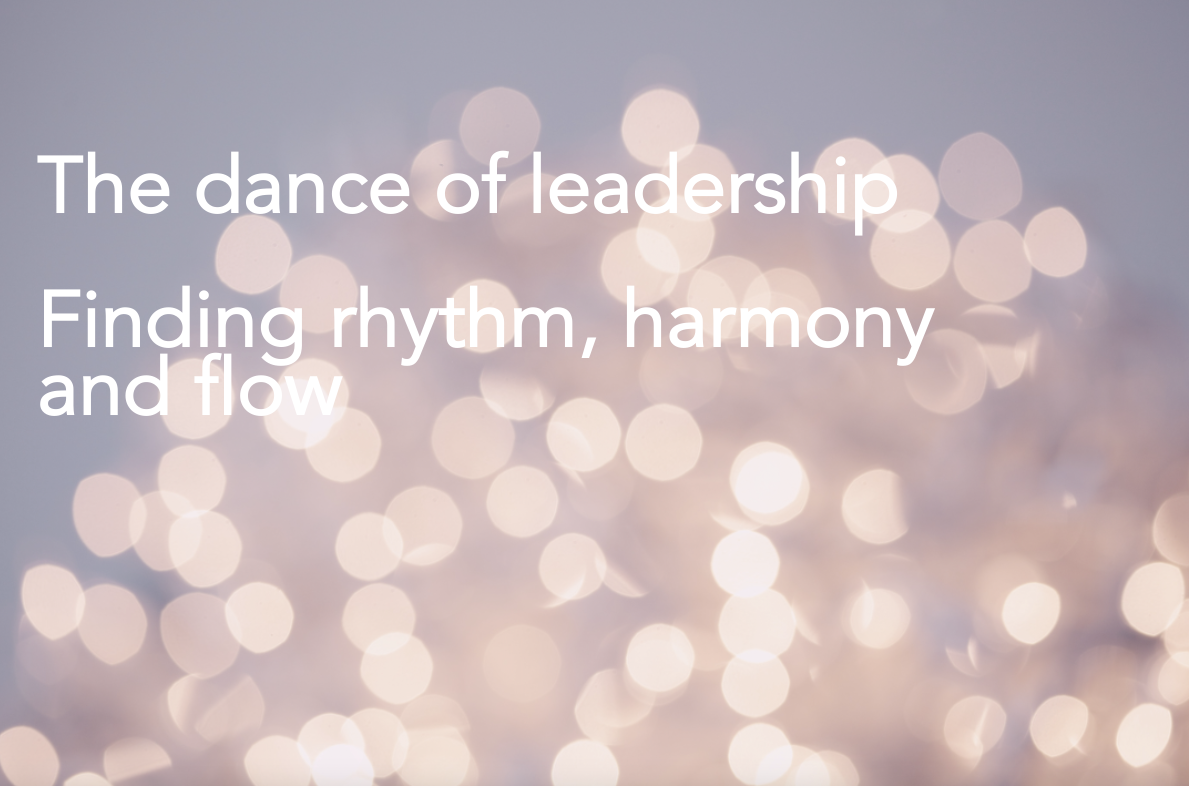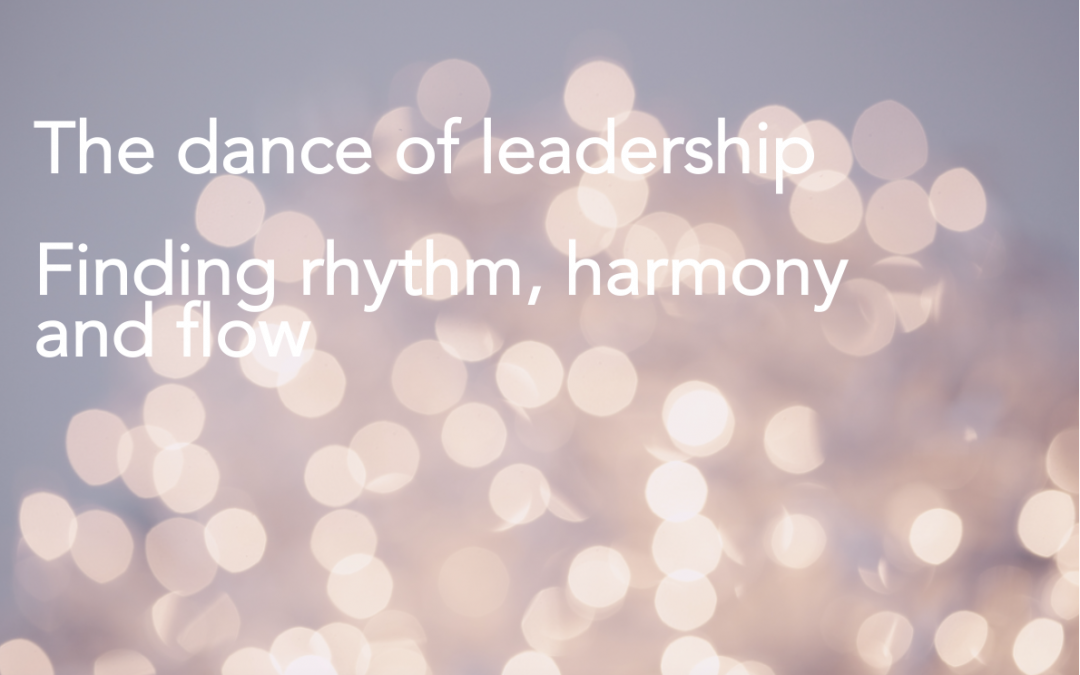Finding rhythm, harmony and flow
With collective leadership becoming more common in these fast changing and uncertain times, it seems time to learn to dance – with each other, and with life.

“It’s about knowing when to come together and when to part – like a dance”, I said on a coaching call, sharing what has become my co-leadership mantra. Hearing my own words, suddenly the penny fully dropped. That since starting a new co-leadership journey, we have been happily waltzing, finding our rhythm, learning from each other how to move in harmony, gradually building ease and flow. We have got to know each other’s style and patterns, working out to how to make the most of each other’s strengths, and shoring up each other’s weaknesses. We have been enjoying learning how to sway together, how to adjust direction, how to seamlessly interchange between leading and following.
As I conjured up memories of much-loved Fred Astaire & Ginger Rogers movies, I recalled the flow between being “in hold”, with dancing apart in graceful complement. It is the same for successful co-leadership – working out how to combine the freedom and expression of being our whole selves, with a union much greater than the individuals.
Sharing some insights from our own and others co-leadership journeys, we invite you to join the dance, finding your own rhythm, harmony and flow.
- Taking time to connect
Beyond a shared purpose and values, we see how important it is for co-leaders to connect personally – to get to know and understand each other as human beings. For many this is natural with an initial connection leading to the collaboration, but for those brought together by circumstances, it can be easy to miss this first step. One young female co-leader explained how she liked to keep her professional life separate from her personal life. Of course, that’s absolutely fine. It’s a question of finding a way of building the connection, openness and trust that is vital for healthy co-creation, challenge and conflict in a way that works for you. It can simply be regular chats over a relaxed coffee, walks or other activities you each enjoy.
- Expecting some inevitable arkwardness and treading on toes.
There is no getting around it, there will be times of discomfort – the challenges of learning the new skill of co-leadership, plus the vulnerability of building a healthy and trusting relationship. Your ideas, your beliefs, your approaches are all seen close up, mirrored back, and sometimes questioned or challenged. Just having a witness to your work life can mean you become more self-aware of your behaviours and choices. A rich time of personal development, it is something to embrace, with opportunities to learn from each other.
- Learning when to lead and when to follow
While you can quickly fall into a shared rhythm and working pattern, being clear upfront about who is leading and supporting on a meeting or piece of work can avoid confusion for you and others. However the joy of co-leadership can be with a fluid approach, naturally alternating between leading and following as projects and discussions evolve. Understanding each others strengths, weaknesses and particular interests can help with this, together with being open and learning from each other’s approaches, styles and cues.
- Finding your natural rhythm together
Perhaps one of you is naturally quick-thinking and decisive, while the other more reflective. Maybe one of you is more visionary and creative, the other more practical and pragmatic. With no approach better or worse than the other, it’s about different approaches and styles for different circumstances. Timing matters too – tuning into each other’s patterns, adjusting to each other’s pace and rhythms, to complement each other and what’s needed at a particular time. If you are on the dancefloor and the music is a jive, it’s best to jive. - Embracing your different styles and expression
A benefit of co-leadership is bringing together diverse expertise, experiences and perspectives. However that’s also the challenge, not only where there are different views and approaches, but also from differences in backgrounds, life stages etc. While not easy, the art is leaning in to the differences, being curious rather than judgmental, exploring sensitively and respectfully, We find it’s the biggest conflicts that lead to the gold! - It takes two to tango!
Being kind and recognising that when someone attacks, gets defensive or closes down, it can be because they feel vulnerable, uncertain, or perhaps just tired! Seeking clarity on each other’s red lines, being compassionate with each other, and keeping perspective can all help. Sometimes a difference can feel a mile rather than an inch.
7. Take a breather
Of course there will be challenges and frustrations when it is easy to think progress would be so much easier alone. While addressing conflict in a timely way is key to all healthy relationships, reflection time is important too. None of us change our minds about deeply held beliefs in an instant, needing time to digest and reflect on new information and perspectives Time to get a glass of water, or put aside to pick up another day.
We hope that’s helpful and you enjoy learning to dance together.
For those thinking about setting out on this path, please also read our companion article, “Is collective leadership right for you?” co-written with Penny Lawrence.
Our growing set of co-leadership stories profile some inspirational leaders as case studies, sharing their stories, reflections and practical learnings.
And if you are inspired to not just metaphorically dance but literally use the power and joy of movement to music to build trust, connection and creativity, get in touch with Sara about her new movement programme for leadership teams.
#danceofleadership #powerofmovement
Sara Ramsey is passionate about helping imaginative leaders bring their visions into being. Focused on building impact, sustainability and wellbeing, she supports a wide range of Businesses and Not for Profits evolve through the various life stages, from start-up and scaling, to maturity and re-imagining.

